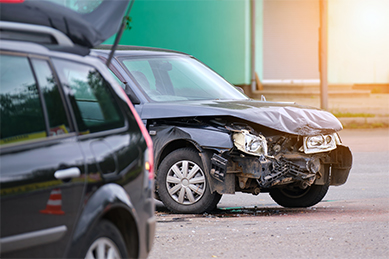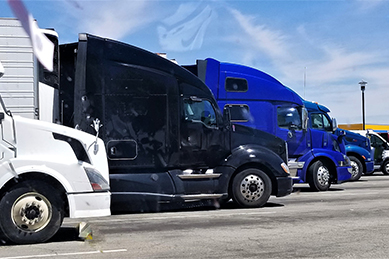How to Get the Most Money for Your Car If It’s Declared a Total Loss
We’ve all heard the terms “totaled” or “total loss.” If someone said to you, “Henry was in a car accident and his car was totaled!” you would probably think the worst. You would probably think to yourself Henry’s condition is serious because he was in a car accident and his car was “totaled.” But what does “totaled” actually mean?
Under Florida Law, a motor vehicle is considered a “total loss” when the vehicle is damaged, and the cost, at the time of loss, of repairing or rebuilding the vehicle is 80% or more of the cost to the owner of replacing the damaged motor vehicle with one of like kind and quality. Let me give you a simple example: Let’s say you have a car that has a fair market value of $10,000, and someone crashes into you. If the cost to repair your car is $8,000 or greater, the insurance company will declare your car a “total loss.”
When this occurs, it is easy to feel that you are at the mercy of the insurance company. After all, it is the insurance company adjuster who will ultimately write the check for the loss of your car (unless of course the other driver has no property damage coverage). In this case, you may have a bigger problem on your hands.
If the other driver does have adequate property damage liability coverage, and if you carry collision insurance on your policy, then you actually have two options:
- You can choose to have the total loss claim handled by your insurance company, or
- Go through the other party’s insurance company.
If you choose to have your own insurance company handle the claim, you may be responsible for a deductible. You will need to refer to your insurance policy to see if you have a deductible on your collision coverage. Most people do.
If you choose to utilize the other party’s insurance company to pay the total loss of your vehicle, there is no deductible to worry about. I often tell my clients to have each insurance company submit a “total loss” offer and choose the greater of the two. However, some people do not want to use their own insurance to cover the loss caused by the other driver and will therefore deal only with the other party’s insurance company to resolve the damage claim.
Regardless of which insurance company you choose to handle your total loss claim, you will initially need to wait for the insurance adjuster to provide a settlement offer. While you’re waiting, you should be doing your own research so that when you receive the insurance company’s offer, you are able to assess whether the offer represents the fair market value of your vehicle. There are many online sources to help you educate yourself. So do your homework.
Once you receive the insurance company’s initial settlement offer, you should already have a good idea of the fair market value of your vehicle. Compare your figure with the figure offered by the insurance company.
In my experience, the insurance company typically offers less than what my research (or that of my client) has revealed the fair market value to be. If the two figures are relatively close, it may be a matter of simply negotiating with the insurance adjuster to reach an agreement.
However, if your figure is significantly greater than the insurance company’s, more work needs to be done to determine why. If the insurance company is using a database reflecting recent sales in your area of similar vehicles, and you have essentially researched the same, why are your figures not similar?
One reason may be that either you or the insurance company is not comparing apples to apples. In other words, if your vehicle is a 2008 Honda with manual transmission and manual windows, you should not be considering sales prices of Hondas with automatic transmissions and electric windows. You should limit your research to vehicles that match yours as closely as possible. Options such as automatic transmission can add hundreds of dollars to the value of a vehicle.
In addition to making sure the make, model, year, accessories, options, etc. are similar to your vehicle, you should also limit your comparison analysis to vehicles which have approximately the same amount of mileage and reflect the same condition as your vehicle, i.e. excellent, fair, poor, etc. It is also important that the insurance company likewise does the same. Request a copy of the results of their database search containing the list of all of their comparables to verify this.
The process is similar to when a real estate agent determines how much to list a house for sale. The agent will look at the comparables, or “comps” to determine the appropriate listing price for the home. Likewise, comparables are utilized in determining the fair market value of a vehicle for the purpose of assessing a total loss settlement.
Once you receive the insurance company’s database research results, look through the list of vehicles and make sure they are “true” comparables. If you come across a vehicle that is not a true comparable, insist that the insurance adjuster remove that particular vehicle from consideration in arriving at the average.
If your vehicle has 20,000 miles on it, for instance, you certainly do not want a vehicle with 100,000 miles being used to determine the average fair market value. Obviously, the 100,000-mile vehicle will have a lower sales price, and as a result, will bring down the overall average for fair market value, resulting in a lower settlement offer to you.
In addition, scrutinize the insurance company’s database research report to make sure they have listed the make, model, type, condition, mileage, etc., of your vehicle correctly. If your vehicle has interior wood trim, make sure the insurance company’s report reflects this.
Finally, if you have the opportunity, you may want to clean the inside of your car before the adjuster comes to see it. It’s no different than if you were going to trade your car in or sell it on your own; you want it to look its best.
By following these simple tips, you can increase your chances of settling your total loss claim fairly.








